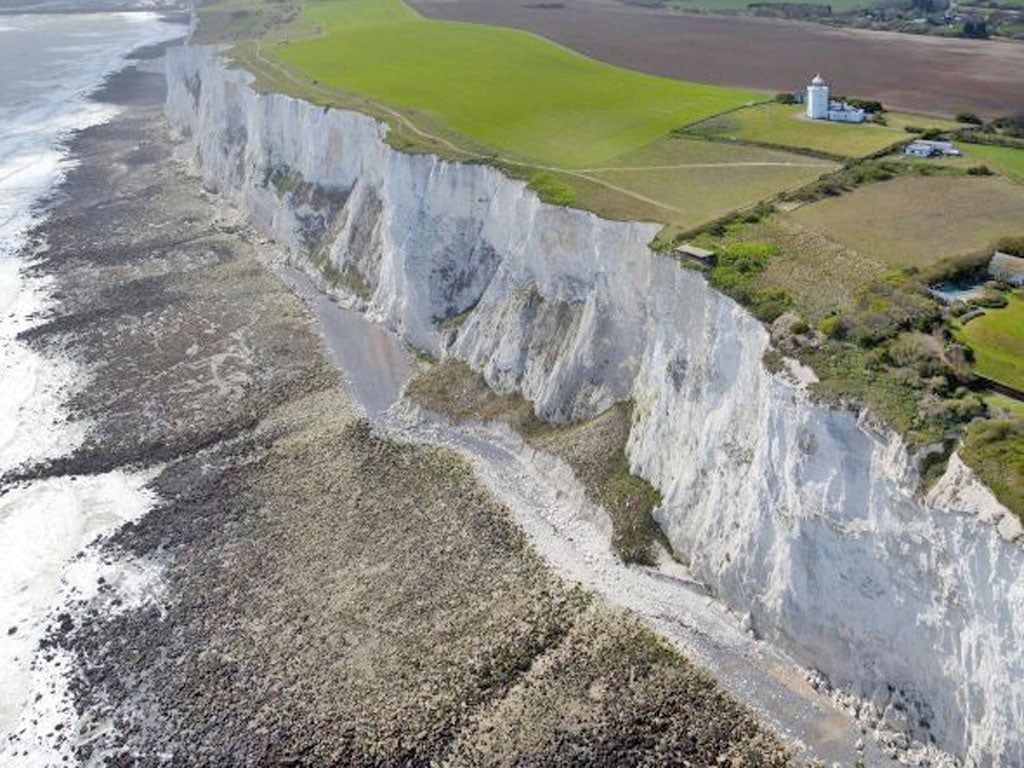Large section of Dover's White Cliffs falls into English Channel

Your support helps us to tell the story
From reproductive rights to climate change to Big Tech, The Independent is on the ground when the story is developing. Whether it's investigating the financials of Elon Musk's pro-Trump PAC or producing our latest documentary, 'The A Word', which shines a light on the American women fighting for reproductive rights, we know how important it is to parse out the facts from the messaging.
At such a critical moment in US history, we need reporters on the ground. Your donation allows us to keep sending journalists to speak to both sides of the story.
The Independent is trusted by Americans across the entire political spectrum. And unlike many other quality news outlets, we choose not to lock Americans out of our reporting and analysis with paywalls. We believe quality journalism should be available to everyone, paid for by those who can afford it.
Your support makes all the difference.A large section of Dover’s famous White Cliffs has tumbled into the English Channel.
Tonnes of chalk collapsed when part of the cliff-face sheared off near St Margaret’s Bay between Dover and Deal in Kent. A bench and some fencing on the cliff-top came crashing down with the chalk, which is now lying in a mound at the base.
Dover Coastguard has warned ramblers of the danger.
“Coastguard rescue officers were tasked to make an assessment of the area and take some pictures which were sent off to the relevant authorities,” a spokesman said.
“The cliff-fall extends about 150 yards from the base of the cliff towards the sea at ground level, and the fall is about 15ft to 20ft high.”
It is thought the cliffs were weakened when rainwater froze after being absorbed into the chalk and expanded. This, combined with high winds, brought down the cliff section.
In March last year, an even larger section of the cliffs crumbled after a winter of freezing weather.
The cliffs’ owners, the National Trust, are aware of the latest incident and warning signs have been installed to keep walkers out of danger.
A National Trust spokesman said: “This cliff fall is part of a process of natural regeneration that happens on this world famous stretch of the Kent coast, helping to keep this special place, recognised by millions across the world, so distinctive.
“Throughout the year we closely monitor how the elements affect the chalk cliffs, helping us to manage the coastal footpath.”
The cliffs were immortalised by Dame Vera Lynn's wartime song The White Cliffs of Dover, and they play host to an array of wildlife, including the Adonis blue butterfly and peregrine falcons.
Join our commenting forum
Join thought-provoking conversations, follow other Independent readers and see their replies
Comments